Perfecting Your Model’s Sails: The Art of Rigging | Seacraftclassics
- September 10, 2023
- Boats and ships

Mastering the Art of Rigging: Enhancing the Authenticity of Your Model’s Sails
When it comes to creating a realistic and authentic model of a sailboat, one of the most crucial aspects is perfecting the rigging, particularly the sails. The art of rigging involves setting up the sails in a way that accurately represents the real-life counterpart, capturing the essence and beauty of sailing. In this article, we will delve into the secrets and techniques of sail rigging that will elevate the realism of your model to new heights.
Unveiling the Secrets of Rigging: Techniques to Perfect Your Model’s Sail Setup
Rigging a sailboat model requires attention to detail and a deep understanding of the principles of sailing. Here are some techniques that will help you achieve impeccable sail rigging:
1. Research and Reference
Before starting the rigging process, it is essential to conduct thorough research on the specific sailboat model you are replicating. Study photographs, blueprints, and even real-life sailboats to understand the intricacies of the rigging. Pay close attention to the arrangement of the sails, the types of rigging lines used, and the tension applied to each line.
2. Use High-Quality Materials
Investing in high-quality rigging materials is crucial for achieving a realistic look and ensuring the longevity of your model. Opt for materials such as fine thread or fishing line for the rigging lines, and choose appropriate fabrics for the sails, such as cotton or silk. These materials will provide the necessary strength and flexibility to accurately represent the tension and shape of the sails.
3. Rigging Techniques
There are several rigging techniques that can enhance the authenticity of your model’s sails:
- Running Rigging: Use thin thread or fishing line to create the running rigging, such as halyards, sheets, and control lines. Ensure that the lines are properly tensioned and secured to the appropriate points on the mast, boom, and deck.
- Standing Rigging: The standing rigging, including shrouds and stays, provides the necessary support for the mast. Use fine thread or wire to create these lines, ensuring they are accurately positioned and tensioned to maintain the correct shape of the mast.
- Sail Attachment: Attach the sails to the mast and boom using small eyelets or hooks. Pay attention to the proper alignment and tension of the sails to achieve a realistic appearance.
Elevate Your Model’s Realism: Tips and Tricks for Achieving Impeccable Sail Rigging
Here are some additional tips and tricks that will take your sail rigging to the next level:
1. Weathering and Aging
To add a touch of realism to your model, consider weathering and aging the sails. Use diluted acrylic paints or fabric dyes to create subtle discolorations and stains that mimic the effects of sun, saltwater, and time. Be sure to apply these effects sparingly and strategically to maintain a natural appearance.
2. Scale Accuracy
Pay close attention to the scale accuracy of your model’s rigging. Ensure that the size and proportions of the rigging lines and hardware are appropriate for the scale of your model. This attention to detail will greatly enhance the overall realism of your sailboat replica.
3. Practice and Patience
Perfecting the art of rigging takes practice and patience. Don’t be discouraged if your first attempts are not flawless. Take the time to learn from your mistakes, refine your techniques, and experiment with different approaches. With each model you build, your skills will improve, and your sail rigging will become more refined.
Mastering the art of rigging is essential for creating a realistic and authentic model of a sailboat. By conducting thorough research, using high-quality materials, and employing the right techniques, you can achieve impeccable sail rigging. Additionally, incorporating weathering and aging effects, ensuring scale accuracy, and practicing patience will elevate the realism of your model’s sails even further. So, set sail on your next model-building adventure and let your rigging skills shine!
Most Viewed Posts
- Talk about a venue with a view! This Quebec couple had the absolute wedding of …
- Everything You Need to Know About Trading in Your Boat
- Wishing all the IMOCA Globe Series teams and skippers competing in the Vendée-Ar…
- Happy 4th of July! Wishing you all a happy holiday weekend on the water with you…
- The training continues for Alex and the crew. In case you missed it, we won’t b…
Our latest custom models
- model 1329 1329 products
- Custom Sail boats 218 218 products
- Custom Power Boats 399 399 products
- Custom Half Models 532 532 products
- Custom Desk Models 92 92 products

Fast Shipping or local PickUp
Potter solutions, the one stop model yacht shop.
Sails, rigs, boat stands, accessories and fittings, including the new range of DF65 and DF95 complete packages.
Email Address
the history of the future
At the age of fifteen David Potter started sailing model boats at the world famous Birkenhead Model Yacht Club.
In 2012 he decided to turn his passionate hobby into a business and launched Potter Solutions.
As a qualified engineer, with a good eye for detail, he produces a range of equipment for the majority of radio controlled model yacht classes.
David has competed in this thrilling sport for over Thirty years at both national and international events and is fully aware of the need for products that can deliver in the field at a competitive price.
Whatever your requirements, including information and advice, David is always available for a chat.
featured products
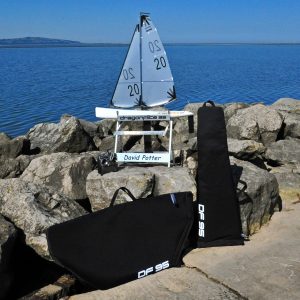
Complete DF95 Package
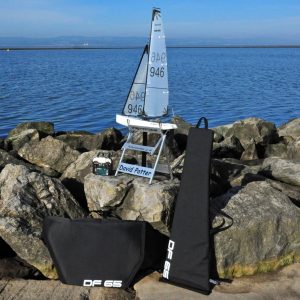
Complete DF65 Package
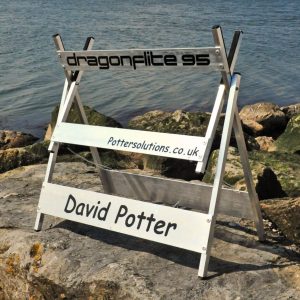
DF95 Alloy Boat Stand

Pierre Gonnet Mast 11.1mm
Everything in one place.
30 Years of experience in radio sailing means we know what’s required to produce competitive and reliable parts .
Order before 3pm for UK next day delivery *
Most products can be shipped same day. Some products like sails * are made to order unless they are from our standard range. Products that can be dispatched same day will be indicated on the product description.
Secure Ordering online
You can place an order online. Once we receive the order we calculate the shipping cost and send you information on how to make payment. Your personal information is protected and encrypted by Secure Socket Layer (SSL) technology. Our website is ecommerce PCI Compliant .
Customer Service
Excellent customer service is one of the key areas where we can truly make a difference, which is why we work hard to keep our customers happy and make it easy to do business with us. A quick response matters and we aim to reply promptly and professionally.
some of our reviews
A history of trust and service.
“Fast shipping and exactly the parts I needed to complete my new IOM. Highly recommended”
“Bought a boat stand for my Marblehead. Arrived in a couple of days and very happy with the quality.”
“Bought some new sails for my DF95. Potter’s service is excellent. The sails are top quality.”
Nylet. Fine Sails & Quality Products ~ 92 Years
Welcome to the 2024 nylet website: everything for the model yachtsman. world-wide mail order service since 1958., welcome to the 2024 nylet website. nylet 92 years . the oldest established international master sailmakers, since 1932. everything for the model yachtsman. creating the very finest sails. tradition - craftsmanship - innovation. established 1932. 92 years since our firm's founding ethos "fine products, quality first". nylet racing sails are used the world over. makers of model sails to the national maritime museum cornwall. sails made by special commission for collectors & museums. every sail suit carefully made to your special order either in synthetic sailcloth, or for the vintage or classic yacht we make fine sails in cotton. large range of yacht fittings, wires, screws, tools etc. our fast world-wide mail order service (since 1958) is open for business. scroll down for more, or go to top toolbar to click on other pages. thank you for visiting our website, we hope you will find our product listings useful. iom sail rig kits, plus other class rig kits. replacement kit sails such as fairwind, seawind, victoria, etc. sails made for 200 different designs (see the "150 sails" list) and which include the classic - vic smeed's starlet and star baby, also wild duck (plan sold by sarik hobbies) and the recent eventide. prompt despatch from stock of large range of mast & deck fittings, aluminium tubing (incl stiffer 7075), wires & cordage, screws, tools, booklets & other quality products for model yachts, see price list (some 500 items). nylet racing sails with our "wind catching" shape - all sails cut specially to order and designed to enable your yacht to respond to varying *wind conditions, sails you can be proud of to compliment your model racing or cruising yacht. the very finest cotton sails manufactured for sailing yachts and display models. sails with wind catching shape and that extra sparkle. cross-reference listings of fittings in section e of our price list with the online "fittings & photos" page. full size sailmakers and contractors to the admiralty 1932-1966. 1772. silk mercers established in high holborn, london - 8 generations - 252 years of working with fine cloths. model & miniature makers spanning 4 centuries and 12 generations, with an example of our early 18th century work held in the british museum, london. slide & click on any of the 7 links below, or click any link on top bar this is just one of 35 pages on our website., product & price list.
PRICE LIST - your first stop - approx. 500 items (fully searchable pdf file).
Quick guide to Sails
IOM, M-class, Ten Rater & other sails. Replacement kit sails - Fairwind, Voyager 2, Victoria, Seawind (over 150 other standard sail suits available).
Our Sailmaking Service in detail
Fine 'vintage' style cotton sails.
Creating the Finest Sails for Vintage & pond model yachts, Nylet cotton sails are specially made to order.
IOM rig carry bags & IOM carbon-fibre fin sets, ballast.
Sail rig carry/stowage bags; lead ballast; high quality c.f. fins/rudders.
Nylet 'How To' booklets
A range of 'How to' booklets, the BB3 aspects of fitting out model yachts.
Rig & deck fittings, wires etc.
Prompt despatch on our large range of quality rig & deck fittings (see photos), cordage, wires, stainless steel screws & nuts, brass wood screws, tools, etc.
Vintage yacht restoration
Your vintage model yacht can be carefully restored in our workshop.
Mast & boom tubing
Range of aluminium mast & boom tubing (incl 7075 grade).
Yacht sail winches
Sail winches to suit 36 inch, IOM, Marblehead, 6M, 10R & A-class.
Nylet. Master Sailmakers - Quality First. Established 1932. Click the "contact us" button to email your enquiry and for phone numbers/email/business hours & other/holiday dates.
View more photos of nylet sails, download our order form here., welcome - accueil, bienvenido, velkommen, welkom, tervetuloa, willkommen, benvenuto, velkommen, bem-vindo., nylet ~ master sailmakers ~ "quality first". 2 generations, 108 years of experience. 92 years of model sailmaking (including 35 years full size sailmaking). at nylet we don't just 'make' sails, we create sails, we breathe life into the sailcloth in order that they might be shaped by the wind. using technological advances in materials coupled with innovation, expertise and tradition over 92 years to bring you the very finest model sails. all sails are made specially to your order; please phone us and/or email sail plan, drawing for a quotation. see price list for 'standard' racing sails, iom sails and replacement kit sails (plus three sail pages with full info)., everything for the model racing yachtsman since 1932. world-wide mail order service since 1958. prompt despatch on fittings and stock items. quality mast & deck fittings, sails of all types, screws & nuts etc. accessories, aluminium tubing, iom rig bags and more. fast world-wide mail order service. please click on our price list before enquiring (500 items). over 200 sail designs available. makers of model sails to the national maritime museum cornwall., a warm welcome to our customers and new visitors to our website. if you have logged on recently then please refresh your browser to enable updated pages to be displayed correctly. this website contains approx 35 pages including help/info/tips files. clickable links also on top bar. for may holiday dates see contact page. we are working to bring you nylet products via our long established prompt world-wide mail order service. full details on our dedicated mail order page. we wish all our customers good health and happy sailing., about us; also making your order..
We hope you will find our services and products useful in your model yachting hobby. Our mail order service commenced in 1958 and we have been despatching our products world-wide since then.
Our PRICE LIST gives you instant access to almost 500 items so please refer to this firstly before enquiring. And please note there is no VAT tax (we do not charge VAT). Having firstly visited the list of products to see what we offer, the other dedicated pages on this site are to assist you with further info on sails, aluminium mast/boom tubing, rig & deck fittings (with photos), wires & cordage, screws & bolts etc., sail winches, tools & accessories. To access all other pages and products as well as our "help" pages either click on the individual (sliding) carousel links "read more" or via the top bar. There are some 35 pages on this website (including help files with useful tips). All other pages can be accessed using the drop down menus at the very top of each page.
Nylet are the longest established professional model sailmakers in the world, manufacturing full size sails from 1932 to 1965, and also model yacht sails in cotton from the early 1930's onward. 108 years of experience - 2 generations. We have been exporting our products world-wide since 1958 and offer a comprehensive model sailmaking service including yacht sails made in white Dacron, also racing scrim, and IOM sail rig kits, plus replacement kit sails, also Dacron Heritage sewn sails in 1950's/60's style. For some 35 plus years we have again manufactured finely finished Premium 'vintage' style cotton sails. We offer a large range of rig & deck fittings, wires & cordage, a huge selection of screws, nuts etc, sail numerals, accessories and hardware for modern racing yachts. Also sail winches, and much, much more. For products and prices click on (top bar) "all pages" and select from the drop down list. Please also see customers comments on the various pages. News - Range of sail winches for most yachts, see dedicated winch page; for prices refer to our products & price list in section M (prices start at around £100). Just a note about our sails. As it says on the "sail" pages Nylet sails are finished and are complete with batten stiffeners (where necessary) and all eyelets etc etc. A few customers ask if they are complete - seems some Chinese "kit" sails are not fully finished (I use the word "sails" loosely here!). We are Master Sailmakers and have been for 92 years , so you are purchasing the best. Please read our 3 sail pages for fuller details.
NYLET, a family business (since 1832), has moved with the times over 3 centuries and for many years been run on a mail order basis. We are thus able to focus on orders from home and abroad enabling us to effect a brisk turnaround on stock items. On a personal note, a milestone - in 2024 I celebrate 58 years of model sailmaking (taking over from my late father in 1981) and am pleased to say that I take great pleasure in my work, every sail I make is given equal attention to detail. Our skills represent some 108 years of sailmaking experience when taken together with my late father, who taught me most of what I know. It might actually be 118 years if I reckon his early years working for his father (a keen yachtsman) and making sails for the dinghy he constructed in the mid 1920's (before making sails commercially). Our family firm (originally known as J.Parsons) was established in 1832, 5 generations ago and originally being chandlery supplies and manufacturing canvas goods, sheeting, tilts etc. for narrowboat hauliers as well as farmers, then later in the marquee trade and in turn manufacturing full size sails as well as model sails from the early 1930's. We are proud that in our family business we can say this is some 192 years of manufacturing.
How to order and pay . VISA, MASTERCARD & PayPal accepted, or electronic bank transfer (BACS). Please email or phone with your order. FOR DELIVERY times and making/putting up your order please see relevant info pages.
Les visiteurs de la France s'il vous plait cliquer sur "bienvenue". Los visitantes procedentes de Espana, por favor haga clic en "bienvenue".
Today - Racing sails in scrim and film, Dacron sails & Heritage sewn Dacron sails. Nylet Finest 'Premium' cotton sails, fittings etc. 2016 - Frank Parsons marked his 50th year of model sailmaking. 1966 - Coloured Terylene racing sails. 1932 - Commencement of full size and model sailmaking. 1834 - Founding of the family firm, J.Parsons (canvas goods manufacturers). 1772 - My 4th gt grandfather, Michael, a Silk Mercer in High Holborn, London, working with fine cloths. 1738 - My 5th gt grandfather, Michael Compigné, Goldsmith, London, a specialist miniature maker for private customers, items made in gold & silver. 1620 - My 8th, 7th & 6th gt grandfathers, Clockmakers in Normany, London, and Winchester. From 1620 to 2022, over 400 years of the finest craftsmanship. 400 Plus Years of Tradition
Sails made by Special Commission for Collectors & Museums. Nylet IOM racing sails finely manufactured in racing scrim, white Dacron and satin film. Also replacement kit sails; Classic Varnished Terylene sails, also "Heritage" 1960's style sewn white Dacron sails made exclusively by Nylet. Also Premium 'Vintage' style cotton sails. Any size sails, of any type, made to your drawings or templates. Just a note, sail suits are often wrongly referred to as "sets". In nautical parlance sails are a "suit" whether that be 2, 3 or 4 sails (or more) for a yacht or a working boat, or a ship of the line such as HMS Victory where a dozen or more sails may be involved. All our sails are priced as a suit.
Makers of model sails to the National Maritime Museum Cornwall.
*Note: Wind conditions within sail type & design parameters.
Please note, we are not a "shop" (we have been asked). Phone us to chat, always happy to help.
The Nylet website is often updated weekly; updated September 2024
SOME Testimonials
Thank you for the BB3 booklet - a mine of information.
Thank you for such excellent service again, quality goods sent at lightning speed. A credit to how things should be done.
I had various recommendations of who to get sails from but the other day I saw a yacht with your sails and it just shone out, the shape looked beautiful, so I decided there and then to contact you.
Thanks Frank, sails arrived, what a work of art! They are incredible!
The fittings arrived in record time and I am really grateful to you for such a superb service.
I was pleased to receive my new IOM sails today, they are very good indeed just what I wanted, possibly the best I have ever had, good workmanship.
Many thanks for the superb Seawind sails that arrived this morning. I really appreciate the speed of processing of the order, and the precision of the finished sails.
Sails received with thanks. Great quality and great fit!
The M-class sails arrived and absolutely fantastic, really pleased and more than happy to recommend your workmanship.
The Voyager sails arrived in perfect condition and look beautiful. Thank you very much for the nice work!
Just to let you know that the new IOM sails work very well, thank you. I had 2x1st, 2x2nds,2x3rds, and 1 fourth. So I came first overall after 7 races.
I live on the coast of NSW in Australia. Some time ago I bought Spirit No.2751 (the one featured on your site). I am currently racing the boat here in Australia in several IOM fleets. The elliptical rudder works perfectly and the boat is at full potential now, points higher than the TS2 and the Topiko. Neither are faster off the wind.... Thanks for a great boat, I have never felt another IOM that glides to windward like the Spirit 3. All your efforts are appreciated here.
I just wanted to say a really big thank you for the lovely suit of Dacron Heritage (sewn) sails you have made for my vintage 4 foot model J Class sloop. I have put the sails on the spars and they look superb! They are beautifully made as I expected them to be, but in all fairness it is actually better than I had even hoped for.
Sails have arrived safely and look fantastic. Very many thanks.
Many thanks, order arrived today, superb service as always.
Just a note to thank you for phoning me with the expected delivery of the Dragon sails. They came the same day! I have to say that they look stunning and beautifully made with lovely details.
Safely received! Thanks for the great service.
Hope you are doing well, again, thank you for the (cotton) sails. They turned out beautifully.
I immediately rigged my 36"-class and was happy about the perfect fit of the (cotton) sails. They are wonderful and I am happy. Thank you very much!
Sails arrived this morning, as promised; they are a work of art - the real thing! Whatever else people say about the barge, they will say "who made her sails?"
Sails have arrived safely. But what a superb job, my old girl will be the best dressed yacht at any of our VMYG meetings. Wonderful work of the very highest standard as always from you, I cannot thank you enough.
I've never won anything before with my One metre (IOM) yacht but with your sails newly fitted I won the series of races. An excellent job, marvellous, thank you.
Hi. Sails arrived today, very impressed. Thank you.
I received my sails today....PERFECT...arrives safely. Perfect fit and I look forward to sailing with the new sails!!!!!! THANKS,
Received the sails, many thanks - as usual, quality better than expected!
Hi Frank, The One Metre sails are looking great.
Hi Frank thanks for another great (sail) job.
Thank you for your most attentive service, my best regards.
Dear Frank, the sails arrived safely on time, as promised. Superb quality and workmanship, as ever.
more comments from satisfied customers
Just a quick email to let you know the J class sails arrived in perfect condition and look amazing. I will of course send you some pictures when the boat is finished.
Hi Frank. The sails arrived today - they look great. I very much look forward to getting them rigged and tried out. I've already taken trophies with the sails you made for my 10 rater so hoping for more of the same.
The (Seawind) sails have arrived, the only thing I can say is - WOW. What a difference compared with the standard sails.
Absolutely magnificent (cotton) sails!
Congratulations for your sails! They look perfect and the belly looks fine and regular. Many thanks for the high quality of your work.
Many thanks for the most efficient service.
Sails received with thanks. You are a true craftsman.
Looking forwards to receiving the (Mascotte) sails, your workmanship always gives me pleasure.
Many thanks for the first class service you always give, items arrived this morning so that's my bank holiday weekend sorted!
Sails arrived this morning, superb as usual, thanks again.
Beautiful suit of sails arrived safe this morning, thank you.
Hello Frank, the sails arrived yesterday and are super thanks. I attach a photo of them fitted to my yacht.
Thanks for the BEAUTIFUL (cotton) SAILS which arrived today. What fantastic work. Amazing. Well worth the wait! I've fitted the sails to the spars. Fantastic. My goodness you are a skilled and talented man. I saw the shape you had made before fitting and understood why you did so, but only when rigged did it all make sense. Amazing. And those tiny brass eyelets... I took the yacht to my sister this morning. What a thing of beauty, was the unanimous cry. Forgot to get a picture for you in all the excitement... watch this space. I am so grateful to you, and will be coming back for more!
Thanks for your great service and friendly advice.
Order arrived this morning (next day), all OK, excellent service.
Just arrived, perfect delivery! Thank you Frank, and have a nice Weekend!
Many thanks for the prompt reply (directing me to the price list). Lots of goodies there!
The items arrived in the post today, all Ok. Thank you for the quick and excellent service, its nice to know that small orders like mine are given the same service as larger orders.
Hi Frank, (cotton) sails have arrived, they are perfect, you did a lovely job, will send you a pic when on the boat.
Just received my glorious suit! Magnificent! The tablings..... marvellous!!!... the stitching lines, the overall shape, every detail, all very beautiful indeed! I can't tell you how delighted I am. You must understand, the wind has always held a magical place in my heart and the thin membrane with which we apply our feeble human attempts to have it do our way over an equally mysterious sea..... alchemy indeed. I hold this suit in my hands and it all comes alive again. You sir, are a Wizard of Dacron. Thank you for your brilliant work, I raise a glass to you Sir,
Really thanks again for your great products and service!
The sails arrived safely yesterday and look amazing. I am very pleased with the result and they will make the yacht look smarter than she has ever done.
Hello Frank. Thank you for all your help, the sails, mast and fittings are all first class and Starlet is sailing beautifully.
Amazing. I wish all British businesses ran on your lines!
Hi Frank, sails (Nottingham J) arived safely this morning, very pleased, they are very well made and look beautiful. Merry Christmas.
Thanks Frank, wonderful service.
Your sails are a work of art. I wish I had the energy to have all my sails replaced with yours.
- Fair American
- Tools and Techniques
- Kit Database
- Bluenose Canadian Schooner
Rigging Begins
June 23, 2017
Fact check…I’m not great at rigging. Rigging is a pretty specific skill, unique to model ship building, and this is only my second build. On my Phantom build , I kinda rushed through rigging and just tied a bunch of knots. I’m determined to do better this time.
The Plan for Rigging
In looking at other build logs, it seems that many modelers prefer to prepare as much rigging as possible before the masts are mounted on the ship. This has some pros and cons…
- You can move the mast around to get a better angle to work.
- You don’t have to reach around existing rigging lines to attach things.
- You will likely use more rigging line, since you can’t precisely size each line. You have to leave extra length on each run to ensure it is long enough.
- You have a mess of rigging lines that you need to keep organized.
- You have to do a bunch of work before you see any results.
On my Phantom build, I did all the rigging in place, after the masts were installed. This time, I’m going to pre-rig what I can.
The general plan:
- Attach all the blocks, shackles, etc. to the masts, booms, and gaffs.
- Attach as many of the rigging lines as possible to the masts, booms, and gaffs.
- Leave each line with extra length, and coil the lines up.
- Tag each line with a sticker noting which line it is.
- Mount the masts.
- Run the shrouds and attach them to the deadeyes on the hull.
- Run the remaining standing rigging.
Over the last few months, I’ve spent a lot of time reviewing the plans and attempting to identify each rigging line. There are some details that are not very clear on the plans, so I’ve had to research a few items. I’m sure that I’ve got some things wrong, but I think my rigging notes are good enough to get me started.

In preparation, I’ve made the following documents:
- A diagram of all the rigging, prepared in Adobe Photoshop, that shows each rigging line using a color-coded line. The different types of lines are on different layers, allowing me to turn them on and off to isolate lines by type.
- Diagrams of each line, showing how each line is attached, including what kind of splice, seizing, hook, shackle, etc. is used, as well as any blocks.
- A spreadsheet of all the lines, indicating the starting point, ending point, color, line size on the model, and where it is shown on the plans.
The spreadsheet assigns a unique number to each line so I can keep track of things as I’m working. I’ve identified 89 different lines.
Types of Rigging Lines
There are two main ‘categories’ of rigging: standing and running. I’ve never been on a boat, much less a sailing ship, so my knowledge is limited to what I’ve learned over the last couple of years.
From what I’ve seen, standing rigging includes all the lines that hold the masts up. These are typically fairly heavy, and are relatively ‘fixed’. (They can be adjusted through lanyards and such, but they typically do not involve blocks or pulleys.). Running rigging includes all the lines that hold up the sails and adjust how the sails are angled against the wind.
Standing Rigging
On model ships, standing rigging is often done with black rigging line.
The shrouds are rigging lines that hold the masts up by their sides. There are normally several shrouds for each mast. The Bluenose has 4 shrouds for the each lower mast , on each side, for a total of 16. It also has a shroud running down from the top mast , adding another 4. These 20 shrouds are run down to the main rail, where they are secured to the deadeyes on the chain plates .
Finally, there are two top mast shrouds on the main mast, that run from the top of top mast to the trestle tree .

Stays hold the masts on the fore and aft sides. There are a number of different stays on the Bluenose. A few run between the main and fore masts, while several others run down to the deck or bowsprit .

Running Rigging
Most (all?) of the running rigging on a model ship is done with tan rigging line.
The term halliard comes from ‘haul yard’, and refers to lines that raise things. The halliards tend to be some of the more complex rigging lines. They typically have a number of blocks, and often weave back and forth.

The lifts hold tings up, like booms. The Bluenose has lifts for the main boom, the fore boom, and the jumbo jib boom. A couple short spreader lifts hold up the spreaders on the fore mast.

The term tackle seems to refer more the actual pieces that form the pulleys. However, there are a few lines on the Bluenose that the plans refer to as tackles , so I’m using that term here.
The Bluenose has a tackle on the bottom of the main boom and fore boom. It also has tackles for lifting the dories on both the port and starboard sides.

The sheets are lines that control the corner of a sail. They can keep tension, as well as control the movement of the sail. Many of these seem to be capable of running on either the port or starboard side.

The tacks are fairly simply lines that hold down the bottom corner of sails.

The downhauls run from the top of the sail down, and are used to pull the sail down when it is being stowed.

Miscellaneous Rigging
These might better fit under one of the other categories, but I’m separating them out into a miscellaneous category because they a little different than the other lines.
Ratlines and Footropes
Ratlines are ropes that form ‘ladders’ on the shrouds. These can be used to climb up to the upper portions of the masts.
Footropes are lines that are secured to things like the main boom and the bowsprit (not shown) where they extend outside the ship. Sailors could stand on the footropes when they need to get out to these areas.

Flag Halliards
The flag halliards are technically halliards (they lift something), but they are just used for flags so they tend to be pretty light/simple. The Bluenose has three – one on the main mast, one on the fore mast, and one on the main gaff.

I didn’t bother to draw up the clews , but these are noted on the plans so I’m including them here. The clew lines seem to run along the edges of sails, and are used to pull up the corners of the sails.
There is a LOT of discussion online about what size rigging line should be used for the various lines. Hardcore modelers use all kinds of resources to determine the precise size of rope that would have been used. I’m not that fancy.
The Model Shipways Bluenose kit provides rigging line in a few different sizes: 0.008″ (very thin, like thread), 0.021″ (medium weight), and 0.028″ (thicker). These don’t match what’s indicated on the plans. The plans show a variety of thicknesses, like .006″, .012″, and more.
To make things a little more complicated, I’m replacing all the rigging line in the kit with line from Syren Ship Model Company . The kit line is fine, but Syren’s is way better. The sizes are not always exactly the same, so I went with what was close. The 0.008″ kit line was replaced with 0.008″ Syren line. The 0.021″ kit line was replaced with 0.018″ Syren Line. The 0.028″ kit line was replaced with 0.025″ Syren Line.
I decided to use these lines as follows:

Blocks, Hooks, Shackles and Splices
Knowing where lines go and what size they should be isn’t enough. The details matter. Each line has its own unique usage of blocks, hooks, shackles, splices, etc. Adding all these details accurately makes all the difference in the look of the model.
I’ll just touch on the basics here, and go into more detail about how I’m implementing each piece as I get further into rigging.
There are a number of pieces of hardware that go into the rigging. All these little bits and pieces have specific purposes. Some are supplied by the kit, while others have to be made from scratch.
Blocks are pulleys. (Some hardcore ship guys would probably cringe at that statement, but that is the simplest, easiest explanation).
Rigging lines are run through blocks to make things easier to pull and lift.
On a model ship, the blocks are not actually functional. They don’t have the little wheels. Instead, they are just small wooden pieces with holes drilled through for the lines. Depending on the ship, a kit might have many different sizes and types of blocks.

On the Bluenose, we have single, double, and triple blocks. A single block has one set of holes, representing one ‘wheel’ in the pulley. A double block as two sets, and a triple block has three sets.
The Model Shipways Bluenose kit provides blocks in a number of different sizes. I’m only using the triple blocks. All the others have been replaced by block from Syren Model Ship Company . Syren’s blocks are much higher quality.
Blocks can be attached in a number of different ways. I spent a lot of time going over the plans to determine how each block should be attached. Typically, a hook or loop is attached to the block, which is then attached to a mast/boom/gaff, or to another rigging line. I identified several different configurations:
- A block with a single hook attached.
- A block with a single loop attached.
- A block with a loop on both the top and bottom.
- A block with a hook on one end and a loop on the other.

Seizing a block and setting up the hook or loop is a skill that requires a lot of practice. Many modelers have come up with creative jigs and techniques for this.
Several places in the rigging call for hooks . These are fairly simple metal pieces with a ring on one side, and hook on the other. I make mine by bending brass wire.

Shackles are a little more complex. A shackle allows a line to be secured in place, but removed at any time by removing the shackle’s bolt. There are a number of ways to make them. I’ve made some for the bowsprit , and my technique is covered there.

Deadeyes are typically round pieces that are used to secure the shrouds. I installed some of these when I put the chain plates on . Working on the deadeyes is one of my least favorite parts of rigging.
Deadeyes come in pairs, and each pair is held together by a lanyard. This allows the lines to be adjusted to achieve the right tension. Getting them all straight, tight, and even is a pain.

Securing the Lines
To secure the lines to all this hardware, a few different techniques are used. On my first build, I simply tied knots for everything. This time, I’m trying to do things better. My usage of these techniques will not be accurate . In many cases, I’m going to use simple versions of splices and seizings.
Eye Splices
I’ve written about eye splices before. An eye splice is a loop in the end of the line, created by splicing the line back onto itself. Eye splices are much easier to do before the line is attached (in any way) to the ship. Try to do all your eye splices in advance.

Some places call for eye splices that have to be done in place on the ship. In these cases, I’ll be ‘faking it’, but simply seizing the line to itself, wrapping it with thread, and hoping nobody notices.
Seized Loops
A seized loop is common on a model ship. The end result is similar to an eye splice in that it creates a loop, but this technique allows you to tighten the line in place. The line is looped around whatever it is being attached to, pulled tight, then tied to itself with thread.

Lanyards are used in a few places there things need to be pulled tight, but remain adjustable. There are two main types of lanyards on the Bluenose.
The lanyards for the deadeyes are done in the traditional method. There are many diagrams on how to do this. The lanyard is run through the holes in the upper and lower deadeye, they tied off on the shroud.
In other places, like the spreader lifts, lanyards are used to pull the lines tight. For these, I’ll tie the lanyard to the line, then loop it through whatever it is being attached to several times (eye bolt, bail, etc.). Once I’ve got a few loops, I’ll tie it off again.

So, What Next?
Now that I have a plan for the rigging, it is time to get everything I can installed on the masts. The goal is to get everything as complete as it can be before installing the masts.
Unfortunately, it is really hard to document and illustrate this as I go. Also, it would be a little confusing for someone jumping in later looking for assistance with a particular line (they’d see one end of it installed now, and the other end installed much later).
So, to make it easier I’m not going to document the rigging prep I’m doing on the masts. Instead, I’ll jump forward to once the masts are mounted, and fully document each line as I finish it.
Prepping all the rigging on the masts went fairly quickly, taking about a week. Once the prep work was done, all the lines were labeled (I printed some labels). Then I installed the masts.
Serious modelers will tell you not to glue your masts in – the rigging should hold it up if you do it right. The advantage of that is that if you need to remove the masts in the future (repairing damage several years from now), you can.
I’m not good enough at rigging to pull that off, so I glued my masts in place.

Rigging lines and hardware installed on the masts. Each line is coiled and labeled.
The coiled and labeled rigging lines look like a mess, but they are actually pretty well organized. Each line is identified by the number from my spreadsheet as well as its name.

Messy, but still organized.
Now all I have to do is finish attaching all this stuff.
- Click to share on Twitter (Opens in new window)
- Click to share on Facebook (Opens in new window)
- Click to share on Reddit (Opens in new window)
- Click to share on Tumblr (Opens in new window)
- Click to share on Pinterest (Opens in new window)
- Phantom NY Pilot Boat
- Model Ship Kit Database
Copyright © 2018 SuburbanShipModeler.com The text, photos, and content are copyright of this site unless otherwise noted.
Photos were taken by the author unless otherwise noted. All brands and trademarks referenced are the property of their respective owners.
Discover more from The Suburban Ship Modeler
Subscribe now to keep reading and get access to the full archive.
Type your email…
Continue reading
Guide to Understanding Sail Rig Types (with Pictures)
There are a lot of different sail rig types and it can be difficult to remember what's what. So I've come up with a system. Let me explain it in this article.
What are the different types of sail rig? The sail rig is determined by the number of masts and the layout and shape of sails. Most modern ships are fore-and-aft rigged, while old ships are square-rigged. Rigs with one mast are sloops and cutters. Ketches, yawls, brigs, and schooners have two masts. Barques have three masts. Rigs can contain up to seven masts.
'Yeah, that's a gaff brig, and that a Bermuda cutter' - If you don't know what this means (neither did I) and want to know what to call a two-masted ship with a square-rigged mainsail, this article is definitely for you.
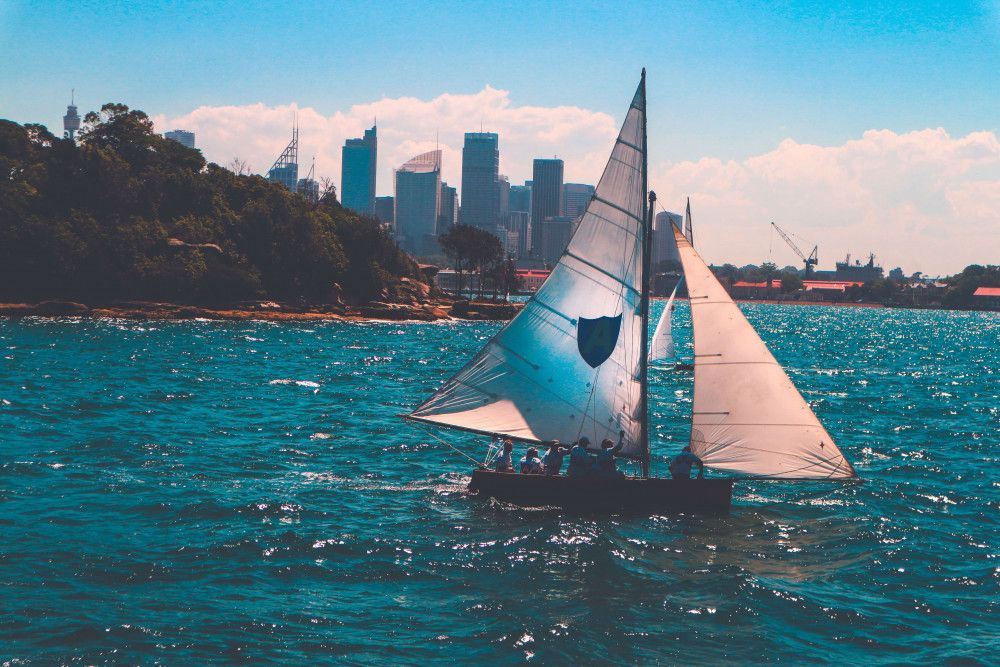
On this page:
More info on sail rig types, mast configurations and rig types, rigs with one mast, rigs with two masts, rigs with three masts, related questions.
This article is part 2 of my series on sails and rig types. Part 1 is all about the different types of sails. If you want to know everything there is to know about sails once and for all, I really recommend you read it. It gives a good overview of sail types and is easy to understand.
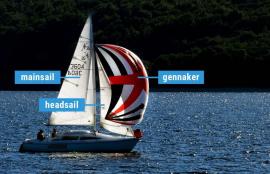
The Ultimate Guide to Sail Types and Rigs (with Pictures)
First of all, what is a sail rig? A sail rig is the way in which the sails are attached to the mast(s). In other words, it's the setup or configuration of the sailboat. The rig consists of the sail and mast hardware. The sail rig and sail type are both part of the sail plan. We usually use the sail rig type to refer to the type of boat.
Let's start by taking a look at the most commonly used modern sail rigs. Don't worry if you don't exactly understand what's going on. At the end of this article, you'll understand everything about rig types.
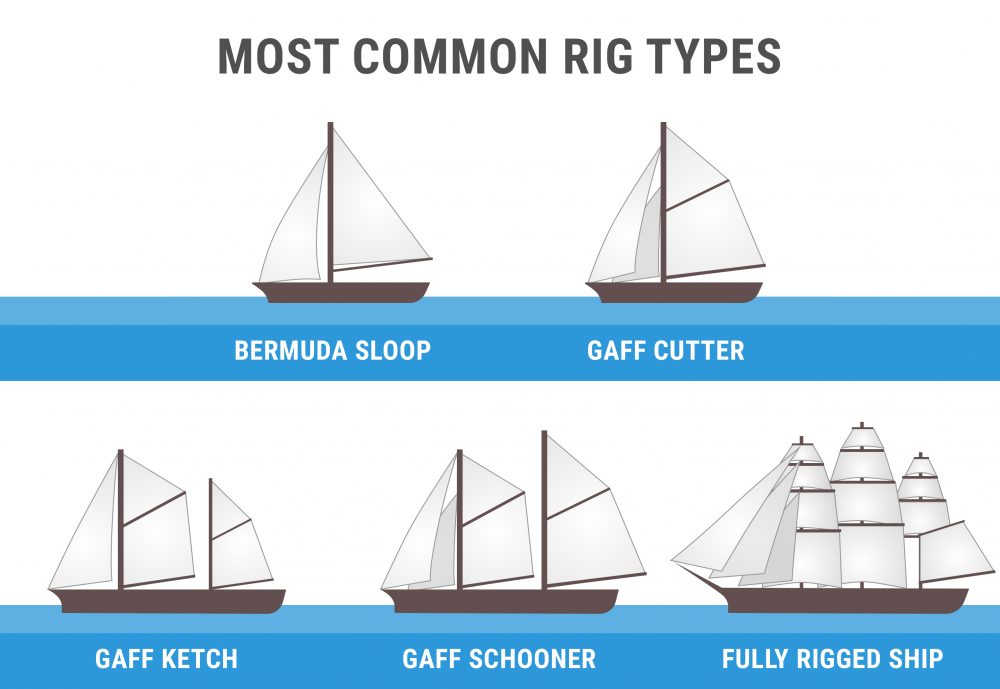
The sail rig and sail plan are often used interchangeably. When we talk of the sail rig we usually mean the sail plan . Although they are not quite the same. A sail plan is the set of drawings by the naval architect that shows the different combinations of sails and how they are set up for different weather conditions. For example a light air sail plan, storm sail plan, and the working sail plan (which is used most of the time).
So let's take a look at the three things that make up the sail plan.
The 3 things that make up the sail plan
I want to do a quick recap of my previous article. A sail plan is made up of:
- Mast configuration - refers to the number of masts and where they are placed
- Sail type - refers to the sail shape and functionality
- Rig type - refers to the way these sails are set up on your boat
I'll explore the most common rig types in detail later in this post. I've also added pictures to learn to recognize them more easily. ( Click here to skip to the section with pictures ).

How to recognize the sail plan?
So how do you know what kind of boat you're dealing with? If you want to determine what the rig type of a boat is, you need to look at these three things:
- Check the number of masts, and how they are set up.
- You look at the type of sails used (the shape of the sails, how many there are, and what functionality they have).
- And you have to determine the rig type, which means the way the sails are set up.
Below I'll explain each of these factors in more detail.
The most common rig types on sailboats
To give you an idea of the most-used sail rigs, I'll quickly summarize some sail plans below and mention the three things that make up their sail plan.
- Bermuda sloop - one mast, one mainsail, one headsail, fore-and-aft rigged
- Gaff cutter - one mast, one mainsail, two staysails, fore-and-aft rigged
- Gaff schooner - two-masted (foremast), two mainsails, staysails, fore-and-aft rigged
- Gaff ketch - two-masted (mizzen), two mainsails, staysails, fore-and-aft rigged
- Full-rigged ship or tall ship - three or more masts, mainsail on each mast, staysails, square-rigged
The first word is the shape and rigging of the mainsail. So this is the way the sail is attached to the mast. I'll go into this later on. The second word refers to the mast setup and amount of sails used.
Most sailboats are Bermuda sloops. Gaff-rigged sails are mostly found on older, classic boats. Square-rigged sails are generally not used anymore.
But first I want to discuss the three factors that make up the sail plan in more detail.
Ways to rig sails
There are basically two ways to rig sails:
- From side to side, called Square-rigged sails - the classic pirate sails
- From front to back, called Fore-and-aft rigged sails - the modern sail rig
Almost all boats are fore-and-aft rigged nowadays.
Square sails are good for running downwind, but they're pretty useless when you're on an upwind tack. These sails were used on Viking longships, for example. Their boats were quicker downwind than the boats with fore-and-aft rigged sails, but they didn't handle as well.
The Arabs first used fore-and-aft rigged sails, making them quicker in difficult wind conditions.
Quick recap from part 1: the reason most boats are fore-and-aft rigged today is the increased maneuverability of this configuration. A square-rigged ship is only good for downwind runs, but a fore-and-aft rigged ship can sail close to the wind, using the lift to move forward.
The way the sails are attached to the mast determines the shape of the sail. The square-rigged sails are always attached the same way to the mast. The fore-and-aft rig, however, has a lot of variations.
The three main sail rigs are:
- Bermuda rig - most used - has a three-sided (triangular) mainsail
- Gaff rig - has a four-sided mainsail, the head of the mainsail is guided by a gaff
- Lateen rig - has a three-sided (triangular) mainsail on a long yard
The Bermuda is the most used, the gaff is a bit old-fashioned, and the lateen rig is outdated (about a thousand years). Lateen rigs were used by the Moors. The Bermuda rig is actually based on the Lateen rig (the Dutch got inspired by the Moors).

Other rig types that are not very common anymore are:
- Junk rig - has horizontal battens to control the sail
- Settee rig - Lateen with the front corner cut off
- Crabclaw rig
Mast configuration
Okay, we know the shape of the mainsail. Now it's time to take a look at the mast configuration. The first thing is the number of masts:
- one-masted boats
- two-masted boats
- three-masted boats
- four masts or up
- full or ship-rigged boats - also called 'ships' or 'tall ships'
I've briefly mentioned the one and two mast configurations in part 1 of this article. In this part, I'll also go over the three-masted configurations, and the tall ships as well.
A boat with one mast has a straightforward configuration because there's just one mast. You can choose to carry more sails or less, but that's about it.
A boat with two masts or more gets interesting. When you add a mast, it means you have to decide where to put the extra mast: in front, or in back of the mainmast. You can also choose whether or not the extra mast will carry an extra mainsail. The placement and size of the extra mast are important in determining what kind of boat we're dealing with. So you start by locating the largest mast, which is always the mainmast.
From front to back: the first mast is called the foremast. The middle mast is called the mainmast. And the rear mast is called the mizzenmast.

What is the mizzenmast? The mizzenmast is the aft-most (rear) mast on a sailboat with three or more masts or the mast behind the mainmast on a boat with two masts. The mizzenmast carries the mizzen sail. On a two-masted boat, the mizzenmast is always (slightly) smaller than the mainmast. What is the purpose of the mizzen sail? The mizzen sail provides more sail area and flexibility in sail plan. It can be used as a big wind rudder, helping the sailor to have more control over the stern of the ship. It pushes the stern away from the wind and forces the bow in the opposite way. This may help to bring the bow into the wind when at anchor.
I always look at the number of masts first, because this is the easiest to spot. So to make this stuff more easy to understand, I've divided up the rig types based on the number of masts below.
Why would you want more masts and sail anyways?
Good question. The biggest advantage of two masts compared to one (let's say a ketch compared to a sloop), is that it allows you to use multiple smaller sails to get the same sail area. It also allows for shorter masts.
This means you reduce the stress on the rigging and the masts, which makes the ketch rig safer and less prone to wear and tear. It also doesn't capsize as quickly. So there are a couple of real advantages of a ketch rig over a sloop rig.
In the case of one mast, we look at the number of sails it carries.
Boats with one mast can have either one sail, two sails, or three or more sails.
Most single-masted boats are sloops, which means one mast with two sails (mainsail + headsail). The extra sail increases maneuverability. The mainsail gives you control over the stern, while the headsail gives you control over the bow.
Sailor tip: you steer a boat using its sails, not using its rudder.
The one-masted rigs are:
- Cat - one mast, one sail
- Sloop - one mast, two sails
- Cutter - one mast, three or more sails
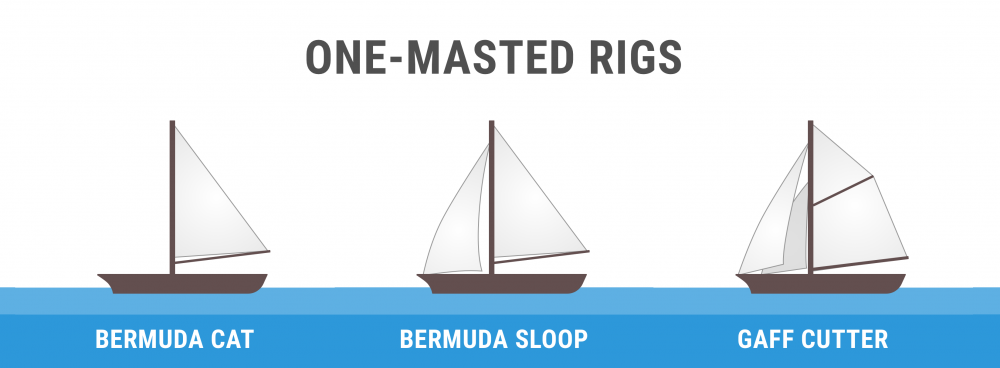
The cat is the simplest sail plan and has one mast with one sail. It's easy to handle alone, so it's very popular as a fishing boat. Most (very) small sailboats are catboats, like the Sunfish, and many Laser varieties. But it has a limited sail area and doesn't give you the control and options you have with more sails.
The most common sail plan is the sloop. It has one mast and two sails: the main and headsail. Most sloops have a Bermuda mainsail. It's one of the best racing rigs because it's able to sail very close to the wind (also called 'weatherly'). It's one of the fastest rig types for upwind sailing.
It's a simple sail plan that allows for high performance, and you can sail it short-handed. That's why most sailboats you see today are (Bermuda) sloops.
This rig is also called the Marconi rig, and it was developed by a Dutch Bermudian (or a Bermudian Dutchman) - someone from Holland who lived on Bermuda.
A cutter has three or more sails. Usually, the sail plan looks a lot like the sloop, but it has three headsails instead of one. Naval cutters can carry up to 6 sails.
Cutters have larger sail area, so they are better in light air. The partition of the sail area into more smaller sails give you more control in heavier winds as well. Cutters are considered better for bluewater sailing than sloops (although sloops will do fine also). But the additional sails just give you a bit more to play with.
Two-masted boats can have an extra mast in front or behind the mainmast. If the extra mast is behind (aft of) the mainmast, it's called a mizzenmast . If it's in front of the mainmast, it's called a foremast .
If you look at a boat with two masts and it has a foremast, it's most likely either a schooner or a brig. It's easy to recognize a foremast: the foremast is smaller than the aft mast.
If the aft mast is smaller than the front mast, it is a sail plan with a mizzenmast. That means the extra mast has been placed at the back of the boat. In this case, the front mast isn't the foremast, but the mainmast. Boats with two masts that have a mizzenmast are most likely a yawl or ketch.
The two-masted rigs are:
- Lugger - two masts (mizzen), with lugsail (a cross between gaff rig and lateen rig) on both masts
- Yawl - two masts (mizzen), fore-and-aft rigged on both masts. Main mast is much taller than mizzen. Mizzen without a mainsail.
- Ketch - two masts (mizzen), fore-and-aft rigged on both masts. Main mast with only slightly smaller mizzen. Mizzen has mainsail.
- Schooner - two masts (foremast), generally gaff rig on both masts. Main mast with only slightly smaller foremast. Sometimes build with three masts, up to seven in the age of sail.
- Bilander - two masts (foremast). Has a lateen-rigged mainsail and square-rigged sails on the foremast and topsails.
- Brig - two masts (foremast), partially square-rigged. The main mast carries small lateen-rigged sail.

The yawl has two masts that are fore-and-aft rigged and a mizzenmast. The mizzenmast is much shorter than the mainmast, and it doesn't carry a mainsail. The mizzenmast is located aft of the rudder and is mainly used to increase helm balance.
A ketch has two masts that are fore-and-aft rigged. The extra mast is a mizzenmast. It's nearly as tall as the mainmast and carries a mainsail. Usually, the mainsails of the ketch are gaff-rigged, but there are Bermuda-rigged ketches too. The mizzenmast is located in front of the rudder instead of aft, as on the yawl.
The function of the ketch's mizzen sail is different from that of the yawl. It's actually used to drive the boat forward, and the mizzen sail, together with the headsail, are sufficient to sail the ketch. The mizzen sail on a yawl can't really drive the boat forward.
Schooners have two masts that are fore-and-aft rigged. The extra mast is a foremast which is generally smaller than the mainmast, but it does carry a mainsail. Schooners are also built with a lot more masts, up to seven (not anymore). The schooner's mainsails are generally gaff-rigged.
The schooner is easy to sail but not very fast. It handles easier than a sloop, except for upwind, and it's only because of better technology that sloops are now more popular than the schooner.
The brig has two masts. The foremast is always square-rigged. The mainmast can be square-rigged or is partially square-rigged. Some brigs carry a lateen mainsail on the mainmast, with square-rigged topsails.
Some variations on the brig are:
Brigantine - two masts (foremast), partially square-rigged. Mainmast carries no square-rigged mainsail.
Hermaphrodite brig - also called half brig or schooner brig. Has two masts (foremast), partially square-rigged. Mainmast carries a gaff rig mainsail and topsail, making it half schooner.
Three-masted boats are mostly barques or schooners. Sometimes sail plans with two masts are used with more masts.
The three-masted rigs are:
- Barque - three masts, fore, and mainmast are square-rigged, the mizzenmast is usually gaff-rigged. All masts carry mainsail.
- Barquentine - three masts, foremast is square-rigged, the main and mizzenmast are fore-and-aft rigged. Also called the schooner barque.
- Polacca - three masts, foremast is square-rigged, the main and mizzenmast are lateen-rigged.
- Xebec - three masts, all masts are lateen-rigged.

A barque has three or four masts. The fore and mainmast are square-rigged, and the mizzen fore-and-aft, usually gaff-rigged. Carries a mainsail on each mast, but the mainsail shape differs per mast (square or gaff). Barques were built with up to five masts. Four-masted barques were quite common.
Barques were a good alternative to full-rigged ships because they require a lot fewer sailors. But they were also slower. Very popular rig for ocean crossings, so a great rig for merchants who travel long distances and don't want 30 - 50 sailors to run their ship.
Barquentine
The barquentine usually has three masts. The foremast is square-rigged and the main and mizzenmast fore-and-aft. The rear masts are usually gaff-rigged.
Faster than a barque or a schooner, but the performance is worse than both.
The polacca or polacre rig has three masts with a square-rigged foremast. The main and mizzenmast are lateen-rigged. Beautiful boat to see. Polacca literally means 'Polish' (it's Italian). It was a popular rig type in the Mediterranean in the 17th century. It looks like the xebec, which has three lateen-rigged masts.
Fun fact: polaccas were used by a Dutch sailor-turned-Turkish-pirate (called Murat Reis).
The xebec is a Mediterranean trading ship with three masts. All masts are lateen-rigged. I couldn't find any surviving xebecs, only models and paintings. So I guess this rig is outdated a long time.
A boat with three or more masts that all carry square-rigged sails is called a ship, a tall ship, or a full-rigged ship. So it's at this point that we start calling boats 'ships'. It has nothing to do with size but with the type of rigging.
More sails mean less stress on all of them. These ships use a lot of sails to distribute the forces, which reduces the stress on the rigging and the masts. Square sails mean double the sail area in comparison to triangular sails.
They are quite fast for their size, and they could outrun most sloops and schooners (schooners were relatively a lot heavier). The reason is that tall ships could be a lot longer than sloops, giving them a lot of extra hull speed. Sloops couldn't be as large because there weren't strong enough materials available. Try making a single triangular sail with a sail area of over 500 sq. ft. from linen.
So a lot of smaller sails made sense. You could have a large ship with a good maximum hull speed, without your sails ripping apart with every gust of wind.
But you need A LOT of sailors to sail a tall ship: about 30 sailors in total to ie. reef down sails and operate the ship. That's really a lot.
Tall ships are used nowadays for racing, with the popular tall ship races traveling the world. Every four years I go and check them out when they are at Harlingen (which is very close to where I live).
Check out the amazing ships in this video of the tall ship races last year near my hometown. (The event was organized by friends of mine).
What is the difference between a schooner and a sloop? A schooner has two masts, whereas the sloop only has one. The schooner carries more sails, with a mainsail on both masts. Also, sloops are usually Bermuda-rigged, whereas schooners are usually gaff-rigged. Most schooners also carry one or two additional headsails, in contrast to the single jib of the sloop.
What do you call a two-masted sailboat? A two-masted sailboat is most likely a yawl, ketch, schooner, or brig. To determine which one it is you have to locate the mainmast (the tallest). At the rear: schooner or brig. In front: yawl or ketch. Brigs have a square-rigged foremast, schooners don't. Ketches carry a mainsail on the rear mast; yawls don't.
What is a sloop rig? A sloop rig is a sailboat with one mast and two sails: a mainsail and headsail. It's a simple sail plan that handles well and offers good upwind performance. The sloop rig can be sailed shorthanded and is able to sail very close to the wind, making it very popular. Most recreational sailboats use a sloop rig.
What is the difference between a ketch and a yawl? The most important difference between a ketch and a yawl are the position and height of the mizzenmast. The mizzenmast on a yawl is located aft of the rudder, is shorter than the mainmast and doesn't carry a mainsail. On a ketch, it's nearly as long as the mainmast and carries a mainsail.

There are a wonderful lots of DIY changeability shows on the cable airwaves these days.
Rick the rigger
There are SO many errors on this site it really should be taken down.
First major mistake is to say you are no longer afraid of the sea.
One that truly gets up my nose is the term ‘fully’ rigged ship. It’s a FULL rigged ship!! Your mast names are the wrong way round and just because there may be 3 it doesn’t automatically mean the one in the middle is the main.
I could go on and totally destroy your over inflated but fragile ego but I won’t. All I will say is go learn a lot more before posting.
Shawn Buckles
Thanks for your feedback. If you like to point out anything more specific, please let me know and I will update the articles. I’ve changed fully-rigged to full-rigged ship - which is a typo on my part. I try to be as concise as I can, but, obviously, we all make mistakes every now and then. The great thing about the internet is that we can learn from each other and update our knowledge together.
If you want to write yourself and share your knowledge, please consider applying as a writer for my blog by clicking on the top banner.
Thanks, Shawn
Well, I feel that I’ve learned a bit from this. The information is clear and well laid out. Is it accurate? I can’t see anything at odds with the little I knew before, except that I understood a xebec has a square rigged centre mainmast, such as the Pelican ( https://www.adventureundersail.com/ )
Hi, Shawn, You forgot (failed) to mention another type of rig? The oldest type of rig known and still functions today JUNK RIG!
Why are so many of the comments here negative. I think it is wonderful to share knowledge and learn together. I knew a little about the subject (I’m an Aubrey-Maturin fan!) but still found this clarified some things for me. I can’t comment therefore on the accuracy of the article, but it seems clear to me that the spirit of the author is positive. We owe you some more bonhomme I suggest Shawn.
As they say in the Navy: “BZ” - for a good article.
Been reading S.M. Stirling and wanted to understand the ship types he references. Thank you, very helpful.
This site is an awesome starting point for anyone who would like to get an overview of the subject. I am gratefull to Shawn for sharing - Thanks & Kudos to you! If the negative reviewers want to get a deeper technical knowledge that is accurate to the n-th then go study the appropriate material. Contribute rather than destroy another’s good work. Well done Shawn. Great job!
Good stuff Shawn - very helpful. As a novice, it’s too confusing to figure out in bits and pieces. Thanks for laying it out.
First of all I have to say that Rick ‘the rigger’ is obviously the one with the “over inflated but fragile ego” and I laughed when you suggested he share his knowledge on your blog, well played!
As for the content it’s great, hope to read more soon!
Alec Lowenthal
Shawn, I have a painting of a Spanish vessel, two masted, with. Lateen sails on both masts and a jib. The mainsail is ahead of the main mast (fore) and the other is aft of the mizzen mast. Would this be what you call lugger rig? I have not seen a similar picture. Thanks, Alec.
Thank you for your article I found easy to read and understand, and more importantly remember, which emphasises the well written.. Pity about the negative comments, but love your proactive responses!
This vessel, “SEBASTIAN” out of Garrucha, Almería, España, was painted by Gustave Gillman in 1899.
Sorry, picture not accepted!
Thank you for a very informative article. I sail a bit and am always looking for more knowledge. I like the way you put forth your info and I feel if you can’t say anything positive, then that person should have their own blog or keep their opinions to their-self. I will be looking for more from you. I salute your way of dealing with negative comments.
Thank you for a great intro to sailing boats! I searched different sailboats because I use old sails tp make bags and wanted to learn the difference. Way more than I ever expected. Thanks for all the work put in to teach the rest of us.
Your description of a cutter is lacking, and your illustrations of “cutters” are actually cutter-rigged sloops. On a true cutter, the mast is moved further aft (with more than 40% of the ship forward of the mast). A sloop uses tension in the backstay to tension the luff of the foresail. The cutter can’t do this.
Also, a bermuda-rigged ketch will have a line running from the top of the mainmast to the top of the mizzenmast.
wow great guide to rig types! thanks
Interesting guide, however I am confused about the description of the brig. You say the main mast on a brig can have a lateen sail, but in your picture it looks like a gaff sail to me. How is it a lateen sail?
Hi Shawn, thank you for taking the time to share this information. It is clear and very helpful. I am new to sailing and thinking of buying my own blue water yacht. The information you have supplied is very useful. I still am seeking more information on performance and safety. Please keep up the good work. Best Regards
mickey fanelli
I’m starting to repair a model sailboat used in the lake I have three masts that have long been broken off and the sails need replacement. So my question is there a special relationship between the three masts I do have reminents of where the masts should go. they all broke off the boat along with the sails I can figure out where they go because of the old glue marks but it makes no sense. or does it really matter on a model thank you mickey
Cool, total novice here. I have learnt a lot. Thanks for sharing - the diagrams along with the text make it really easy to understand, especially for a beginner who hasn’t even stepped on a sailing boat.
Daryl Beatt
Thank you. Cleared up quite a few things for me. For example, I was familiar with the names “Xebecs” and “Polaccas” from recent reading about the Barbary War. I had gathered that the two Barbary types were better suited to sailing in the Med, but perhaps they were less able to be adaptable to military uses,(but one might assume that would be ok if one plans to board and fight, as opposed to fight a running gun duel). Specifically, the strangely one sided August 1, 1801 battle between the USS Enterprise under Lt. John Sterett and the Polacca cruiser Tripoli under Admiral Rais Mahomet Rous. On paper both ships seemed nearly equal in size, guns and crew, but pictures of the battle are confusing. While the Enterprise is usually rendered as the familiar schooner, the polacca Tripoli has been pictured in radically different ways. Thus the Wikipedia picture by Hoff in 1878 used to illustrate the Battle shows a Brig design for Tripoli, indicating 77 years later, polaccas were no longer common.
Lee Christiansen
I am curious as to what you would call a modern race boat with a fractional jib,not equipped for full masthead hoist? Thanks Lee
Thanks Guy: The information and pictures really eliminate a lot of the mystery of the terminology and the meanings. Also appreciate the insight of the handling idiosyncrasies “hand” (staff) requirements to manage a vessel for one that has not been on the water much. I long to spend significant time afloat, but have concern about the ability to handle a vessel due to advancing age. The Significant Other prefers to sit (in AC comfort)and be entertained by parties of cruise line employees. Thanks again for the information.
Gordon Smith
Your discussion made no mention of the galleon, a vessel with either square-rigged Fore and Main masts and a shorter lateen-rigged Mizzen, or, on larger galleons, square-rigged Fore and Main masts, with a lateen-rigged Mizzen and a lateen-rigged Bonaventure mast, both shorter than either the Fore or Main masts. Also, it was not uncommon for a galleon to hoist a square-rigged bowsprit topsail in addition to the usual square-rigged spritsail.
Leave a comment
You may also like.
What's that sail for? Generally, I don't know. So I've come up with a system. I'll explain you everything there is to know about sails and rigs in this article.

17 Sailboat Types Explained: How To Recognize Them

Different Types of Sailing and Racing Explained
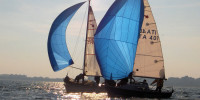
How Are Sail Numbers Assigned? (And how to pick yours)
POPULAR SEARCHES:
- Raspberry Pi
- Woodworking
- 3D Printing
- Maker Faire

- All Stories
- Magazine Projects
- Board Guide
- Magazine Issues
How to Rig a Model Ship

By Gareth Branwyn
Gareth branwyn.
Gareth Branwyn is a freelance writer and the former Editorial Director of Maker Media. He is the author or editor of over a dozen books on technology, DIY, and geek culture. He is currently a contributor to Boing Boing, Wink Books, and Wink Fun. His free weekly-ish maker tips newsletter can be found at garstipsandtools.com.

Ever since I was an avid model-maker as a kid, and now a game modeler as an adult, I have been fascinated by sailing ship models and ships in bottles. The fact that people take the time to meticulously model all of the rope and rigging on a ship model has always been so impressive to me.
Last year, I backed the historical pirate tabletop wargame, Blood & Plunder . The game uses the most incredible resin-cast ship models. They are supposed to simply be game components, mere playing pieces for a game, but they are incredibly detailed and come with all sorts of hardware and accessories (e.g. deck cannons) to make them look as realistic as possible. I haven’t built mine yet, but I can’t wait.

One of the things I have been intimidated by is the idea of doing all of the rope rigging. But this how to article on the gaming site, 1000 Foot General , breaks the process down and makes it look very approachable. I’m inspired.

ADVERTISEMENT
Related Articles from Make:
From the shed: new arrivals.

DIY Arcade Joystick Kit

Make: Arduino Electronics Starter Pack

Maker's Notebook - Hardcover 3rd Edition

Transistor Cat Kit
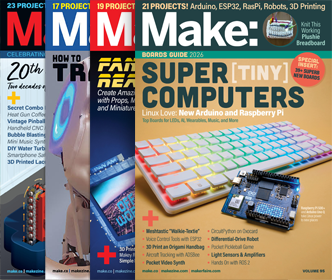
Our websites use cookies to improve your browsing experience. Some of these are essential for the basic functionalities of our websites. In addition, we use third-party cookies to help us analyze and understand usage. These will be stored in your browser only with your consent and you have the option to opt-out. Your choice here will be recorded for all Make.co Websites.

Escape to an island of imagination + innovation as Maker Faire Bay Area returns for its 16th iteration!
Prices increase in.....
- Masting, rigging and sails

- Remember me Not recommended on shared computers
Forgot your password?
Animated Knots
By Kevin May 2, 2013 in Masting, rigging and sails
- Reply to this topic
- Start new topic
Recommended Posts
Someone might find this useful
http://www.animatedknots.com/knotlist.php?LogoImage=LogoGrog.jpg&Website=www.animatedknots.com
- mikeaidanh , SkerryAmp , piperjoe and 12 others

Its all part of Kev's journey, bit like going to the dark side, but with the lights on
All the best
SAY NO TO PIRACY. SUPPORT ORIGINAL IDEAS AND MANUFACTURERS. KEEP IT REAL!
------------------------------------------------------------------------------------------------------------------------------------------------------
On the build table
HMS Indefatigable 1794 by Kevin - Vanguard Models - 1:64 - Feb 2023
Belle Poule 1834 by Kevin - OcCre - 1/90 - French frigate - started June 2024 - -
MHS Britannic by Kevin
SD 14 - Marcle Models - 1/70 - March 2022 - Bluebell - Flower Class - Revel - 1/72
U552 German U Boat - Trumpeter -
1/48 Amerigo Vespucci 1/84 - Panart-
HMS E nterprise -CAF - 1/48
Finished
Hercules by Kevin - OcCre - 1/50 - Tugboat - Finished - May 2024
Nectan-Mountfleet-models-steam-trawler-1 /32 - Completed June 2020
HMS Victory - Caldercraft/Jotika - 1/72 - Finished
Dorade renamed Dora by Kevin - Amati - 1/20 - Completed March 2021
Stage Coach 1848 - Artesania Latina - 1/10 -Finished
Lady Eleanor by Kevin - FINISHED - Vanguard Models - 1/64 - Fifie fishing boat
Link to comment
Share on other sites.

Sweet! This is definitely knot a site I was aware of before - thanks for sharing it, Kevin!
Wayne Neither should a ship rely on one small anchor, nor should life rest on a single hope. Epictetus

Geoff Matson
Thanks Kevin. I have bookmarked this sight.
NRG member #2666 Current build : USS Constitution
Finished builds: Armed Virginia Sloop (in gallery)

michael mott
Kevin thanks for thisthe timing is perfect for I am making ropes and shrouds right now.
Current builds Bristol Pilot Cutter 1:8 ; Skipjack 19 foot Launch 1:8 ; Herreshoff Buzzards Bay 14 1:8
Other projects Pilot Cutter 1:500 ; Maria, 1:2 Now just a memory
Future model Gill Smith Catboat Pauline 1:8
Finished projects A Bassett Lowke steamship Albertic 1:100
Anything you can imagine is possible, when you put your mind to it .
I found this same site when I was making the turks head for my first ship in a bottle.
"I have no special talent. I am only passionately curious." - Albert Einstein.

Excellent site, thanks!
Current Build: Authentic Hannah Kit Bash
Pending Continuation: Sea of Galilee Boat
Completed Build: MS AVS
On Shelf: AL Independence, Blue Jacket Alfred

Thanks for a useful link!
Best regards,
Is under construction Montanes
Ready models Golden Star Corsair San Francisco II
Bronze 24-pdr canone Le Fleuron
Bronze 24-pdr canone Le Fleuron (second version)

They have an app for the iPhone that I find really useful.
Completed: Skipjack Kathryn ; Dunbrody Sectional Model ; Paragon (modified Mayflower) Scratch Build ; Planning a Sectional Model of Dunbrody
I have the Android-app. As I'm a noob at tying knots it's really handy to always have this source..

Just downloaded the iPhone App.
Many thanks Kevin.
Previous Build: LA gun deck cross section. Previous Build: Lancia Armata. Panart 1:16 Previous Build: HMS Pickle. Jotika Build.
HMS Triton cross section 1:32.
Shelved awaiting improved skills:
Chuck"s Cheerful.
Current build.
Tender Avos.
HM cutter Alert.

Easy, helpful, I've bookmarked this site thanks
Regards, Scott
Current build: 1:75 Friesland, Mamoli
Completed builds:
1:64 Rattlesnake, Mamoli - 1:64 HMS Bounty, Mamoli - 1:54 Adventure, Amati - 1:80 King of the Mississippi, AL
1:64 Blue Shadow, Mamoli - 1:64 Leida Dutch pleasure boat, Corel - 1:60 HMS President Mantra, Sergal
Awaiting construction:
1:89 Hermione La Fayette AL - 1:48 Perserverance, Modelers shipyard
Thanks Kevin. I too have bookmarked this site.

OOPS just re-posted this. I should have scrolled down first. Yes nice site.
Current build : Sovereign of the Seas 1/78 Sergal
Under the table:
Golden Hind - C Mamoli Oseberg - Billings 720 - Drakkar - Amati
Completed:
Santa Maria - Mantua --
Vasa - Corel -
Santisima Trinidad cross section OcCre 1/90th
Gallery : Santa Maria - Vasa -
- 2 months later...
Thanks a lot, Knew how to tie a few knots, but never have seen such a easy to understand video and a play by play demo.
Again, thanks for the info.
Calm Seas and Fair Winds
On the ways: HMS Bounty - Artesania Latina
Launched: Scottish Maid - Artesania Latina
On the Shelf : Minature lifeboat - Model Shipways
Bounty Launch - Model Shipways
Emma C.Berry - Model Shipways
- 3 months later...
this link still works for me
I needed this link tonight - something i have posted - has been of some use - yipppeeeeeeeeeee

Q A's Revenge
Yes I've got the iPad app, it's pretty good!

Wish this was around in the late 60's!
Definitely bookmarked
Thanks for knot keeping it to yourself !
Ongoing Build ( 31 Dec 2013) - HMS BELLEROPHON (1786), POF scratch build, scale 1:64, 74 gun 3rd rate Man of War, Arrogant Class
Member of the Model Shipwrights of Niagara , Niagara Region, Ontario, Canada (2016), and the Nautical Research Guild (since 2014)
Associate member of the Nautical Research and Model Ship Society (2021)
Offshore member of The Society of Model Shipwrights (2021)
...and mine is on my iPhone.
This is bookmarked. excelent tutorial thank you.

thanks for sharing
Current builds
- Lightship Elbe 1
- Steamship Ergenstrasse ex Laker Corsicana 1918- scale 1:87 scratchbuild
- "Zeesboot" heritage wooden fishing small craft around 1870, POB clinker scratch build scale 1:24
- Pilot Schooner # 5 ELBE ex Wanderbird, scale 1:50 scratchbuild
- Mississippi Sterwheelsteamer built as christmapresent for grandson modified kit build
- Chebec "Eagle of Algier" 1753--scale 1:48-POB- ( scratchbuild)
"SS Kaiser Wilhelm der Grosse" four stacker passenger liner of 1897, blue ribbond awarded, 1:144 (scratchbuild) "HMS Pegasus" , 16 gun sloop, Swan-Class 1776-1777 scale 1:64 from Amati plan
- "Pamir" 4-mast barque, P-liner, 1:96 (scratchbuild)
- "Gorch Fock 2" German Navy cadet training 3-mast barque, 1:95 (scratchbuild)
"Heinrich Kayser" heritage Merchant Steamship, 1:96 (scratchbuild) original was my grandfathers ship
- "Bohuslän" , heritage ,live Swedish museum passenger steamer (Billings kit), 1:50
"Lorbas" , river tug, steam driven for RC, fictive design (scratchbuild), scale appr. 1:32
under restoration / restoration finished
"Hjejlen" steam paddlewheeler, 1861, Billings Boats rare old kit, scale 1:50

very usefull tks
HMS Victory by Shihawk. Billing 1-75 wood finish
- 6 months later...
only yesterday I was going to post a question "How to tie a Turks Head" ? Now I know, plus lots of other knots , many thanks! Geoff
JerseyCity Frankie
I'm a huge knot nerd and I am glad to see a conversation here about knots. Naturally, sailors are the best at tying knots and ship model builders can only benefit by learning some of the knots of the sailor. Model builders though probably only need to know a very few knots in order to aid in rigging their ships. The Overhand Knot and the Clove Hitch being the two absolute essentials. I am a big promoter of the Constrictor Knot too as I think it easily has a place among the "top ten" most useful knots. If I was to make a short list of "least know but most useful knots" the Constrictor would be my only submission.
Sailors will argue endlessly about which are the ten knots everyone on a ship should know. They all agree the Bowline, Clove Hitch, Reef Knot, Sheet Bend and Rolling Hitch should be on the list but will begin to argue about what the other five should be. There are so many choices. Personally I would leave the Sheet Bend off the list but I know this is a heretical opinion. I just never have any confidence in it as I have too often seen it misbehave in different types of line.
- Kevin , jud and BillLib
Niagara USS Constitution
- 4 months later...
used again today

thibaultron
Ron Thibault
Shipjack Carrie Price from Pyro kit, with upgraded detailing and history.
Going From A 2D Drawing To A 3D Printed Part Tutorial

Don't be bound by the limits of what you already know, be unlimited by what you are willing to learn.
Member of the Nautical Research Guild

- Kevin and GLakie
Join the conversation
You can post now and register later. If you have an account, sign in now to post with your account.

× Pasted as rich text. Paste as plain text instead
Only 75 emoji are allowed.
× Your link has been automatically embedded. Display as a link instead
× Your previous content has been restored. Clear editor
× You cannot paste images directly. Upload or insert images from URL.
- Insert image from URL
- Submit Reply
Recently Browsing 0 members
- No registered users viewing this page.
Modelshipworld - Advancing Ship Modeling through Research
SSL Secured
Your security is important for us so this Website is SSL-Secured
NRG Mailing Address
Nautical Research Guild 237 South Lincoln Street Westmont IL, 60559-1917
Model Ship World ® and the MSW logo are Registered Trademarks, and belong to the Nautical Research Guild (United States Patent and Trademark Office: No. 6,929,264 & No. 6,929,274, registered Dec. 20, 2022)
Helpful links.
- Articles Database
- NRG Home Page
- NRG Online Store
- Important: Our Guidelines
- Terms of Use
- Buildlog Index
About the NRG
If you enjoy building ship models that are historically accurate as well as beautiful, then The Nautical Research Guild (NRG) is just right for you.
The Guild is a non-profit educational organization whose mission is to “Advance Ship Modeling Through Research”. We provide support to our members in their efforts to raise the quality of their model ships.
The Nautical Research Guild has published our world-renowned quarterly magazine, The Nautical Research Journal, since 1955. The pages of the Journal are full of articles by accomplished ship modelers who show you how they create those exquisite details on their models, and by maritime historians who show you the correct details to build. The Journal is available in both print and digital editions. Go to the NRG web site (www.thenrg.org) to download a complimentary digital copy of the Journal. The NRG also publishes plan sets, books and compilations of back issues of the Journal and the former Ships in Scale and Model Ship Builder magazines.
Our Emblem ®
Nautical Research Guild ® and the NRG logo are Registered Trademarks, and belong to the Nautical Research Guild (United States Patent and Trademark Office: No. 6,999,236 & No. 6,999,237, registered March 14, 2023)
- Existing user? Sign In
- Latest Posts
- All unread content since my last vist
- Unread topics I have posted in
- Create New...
- Join Newsletter & Get 10% Off Your First Order

Join / Login
Rigging tools.
Sawing tools are essential for cutting various materials in model making. Sawing tools are indispensable for precise and controlled cutting in model making projects. These tools enable hobbyists to make intricate cuts, navigate tight corners, and achieve accurate shapes and sizes in various materials. Modelers Central has a great range of sawing tools & blades for building wooden model ships & model trains in their range of modeling tools.
Filter Products
Showing all 5 results
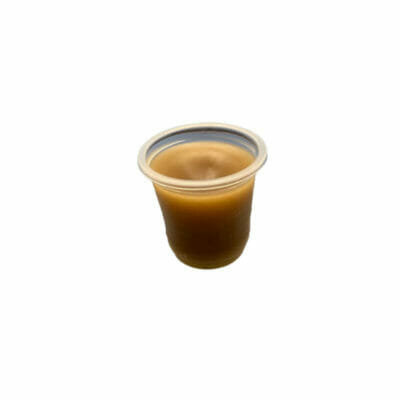
Rigging Wax – Clear – 20g tub
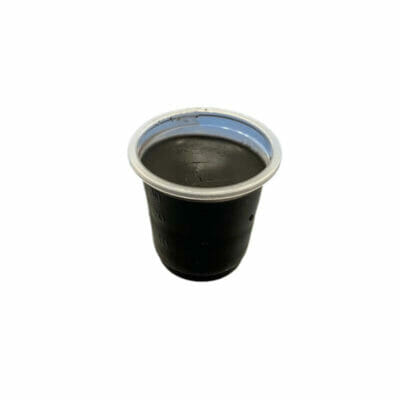
Rigging Wax – Black – 20g tub
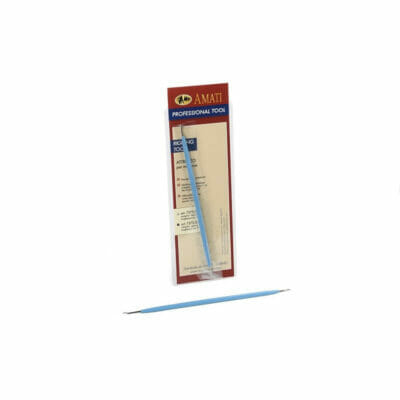
Rigging Tool – Hook Ends
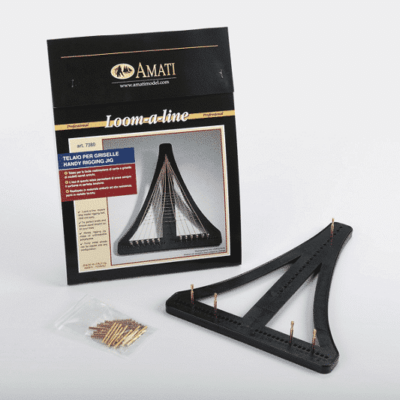
Loom-A-Line Rigging Stand
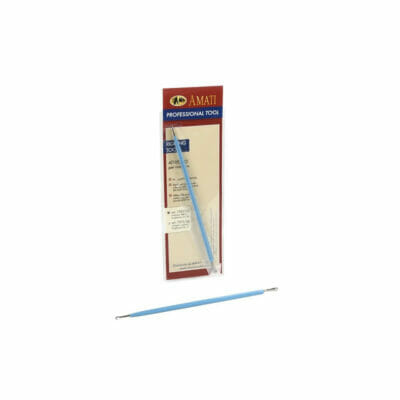
Rigging Tool
Join 18,543 other modelers to hear about specials, new products and modeling tips
- Become a Member
- Modeling Hub
- Model Ship Building
- Maritime History
- Affiliate Program
Information
- Terms & Conditions
- Privacy Policy
Copyright © 2023 Modelers Central. ABN: 31 114 830 732
- Claim 10% Off First Order
- Get 5% off ALL orders with a Membership
- Gift Vouchers
- Help & Advice
Modelers Central. 2023, All rights reserved.

- Claim 10% Off Your First Order
- Get 5% Off All Orders With A Membership

Get 10% off
Your first order.
10% off applies only to full-price items. By providing your email address, you agree to our Terms & Privacy Policy

10% off applies only to full-price items. By providing your email address & mobile number, you agree to our Terms & Privacy Policy and consent to receive marketing messages from Modelers Central at the addresses provided. You can unsubscribe at any time by replying STOP.

IMAGES
VIDEO
COMMENTS
There are several rigging techniques that can enhance the authenticity of your model's sails: Running Rigging: Use thin thread or fishing line to create the running rigging, such as halyards, sheets, and control lines. Ensure that the lines are properly tensioned and secured to the appropriate points on the mast, boom, and deck.
Work from the centre of the ship out and try to avoid locking yourself into difficult positions. A Rigging Tool presented in the Tools section of our Catalogue will be helpful when rigging. The various names for the Running Rigging are presented below. Fore brace. Fore lower topsail brace.
the history of the future. At the age of fifteen David Potter started sailing model boats at the world famous Birkenhead Model Yacht Club. In 2012 he decided to turn his passionate hobby into a business and launched Potter Solutions. As a qualified engineer, with a good eye for detail, he produces a range of equipment for the majority of radio ...
Running Rigging; Turnbuckles & Rigging Screws; Variant boom; Gizmo Set; Rigging tools; Rig Kits. EC12 Rig Kit; IOM Rig Kits; ODOM Rig Kit and Hardware; RG65; Santa Barbara Rig Kit; Soling 50 Rig Kit; Star 45 Rig Kit; U.S. One Meter Rig Kits; Sailmaking Materials. Sail Identification; DF-95 & DF-65 . DF-65 Hatch & Battery Sets; DragonForce 65 ...
Install and rig the booms and gaffs. Make the sails based on the actual layout of my ship. De-rig the booms and gaffs, and remove them from the ship. Attach sails to the booms and gaffs as appropriate. Re-install the booms and gaffs, and their rigging. Add the additional rigging for each sail.
The most important consideration when using scale sails on a model is to determine the set of the sails and their associated yards and rigging, in relation to the presentation of the model. If the ship is underway, running with the wind, then the ship would carry as much sail as she could carry; however, if the ship had her gun
World-wide Mail Order Service since 1958. WELCOME TO THE 2024 NYLET WEBSITE. NYLET 92 years. THE OLDEST ESTABLISHED INTERNATIONAL MASTER SAILMAKERS, since 1932. EVERYTHING FOR THE MODEL YACHTSMAN. CREATING THE VERY FINEST SAILS. TRADITION - CRAFTSMANSHIP - INNOVATION. Established 1932. 92 Years since our Firm's founding Ethos "Fine Products ...
Off and running with the schooner rigged pond yacht 1 2. By Elmina, May 21, 2022. 42 replies. 2.4k views. Keith Black. Monday at 08:33 PM.
Running rigging includes all the lines that hold up the sails and adjust how the sails are angled against the wind. Standing Rigging. On model ships, standing rigging is often done with black rigging line. Shrouds. The shrouds are rigging lines that hold the masts up by their sides. There are normally several shrouds for each mast.
PLEASE NOTE: THIS VIDEO HAS BEEN UPDATED WITH ENHANCED GRAPHICS AND IMPROVED SOUND. CHECK IT OUT HERE https://youtu.be/tRgWtPaCQQcA beginners guide to sailbo...
2023 CATALOG AND PRICE LIST. 1) Select color for corner reinforcements: (red, yellow, blue, green, day-glo orange, day-glo pink, black or white.) 2) Select mainsail to mast attachment: Mast loops, jackwire, bolt-rope. 4) If Class Insignia and racing numbers required, select color: (red, blue, green or black), (add $15.)
Model ship rigging tutorials for beginners model ship makers
Lennarth Peterson's book, by the way, despite its title, only deals with the rigging of one particular ship at one particular period. So whilst it is very good for a model of this type, for earlier or larger vessels, it is a somewhat limited source. All the best, Mark P. Edited March 20, 2016 by Mark P.
Sometimes I cover about 1/4" of the end of a line with super glue and, when the glue dries, cut the tip at an angle to yield a sharp point. Usually I can then get the stiff, pointed tip through an appropriately sized hole. If the tip bends or frays, I re-cut a new point a little ways back and try again. james.
Rigging Cord & Thread. Rigging on ships refers to the intricate network of ropes, cables, and supporting structures used to control the ship's sails and masts. It played a vital role in maneuvering the vessel and harnessing the power of the wind to propel it forward. The rigging was carefully arranged and adjusted to maximize the efficiency ...
The fore-and-aft rig, however, has a lot of variations. The three main sail rigs are: Bermuda rig - most used - has a three-sided (triangular) mainsail. Gaff rig - has a four-sided mainsail, the head of the mainsail is guided by a gaff. Lateen rig - has a three-sided (triangular) mainsail on a long yard.
The largest range of wooden model ship & model boat fittings, accessories & parts available. Modelers Central is the no.1 destination for scratch model ship builders.. There are over 90 model ship fittings categories from anchors to wire, the scratch model boat builder will find what they need here. All items are listed as single items unless ...
The front and side elevations of the mast sections are identified in Figure 1. It is most important to assemble the masts and fit all eye pins and blocks before fixing the mast to the model. The location of all eye pins and blocks on the masts will be presented on the plans in the kit. Each of the parts is presented in more detail below.
The fact that people take the time to meticulously model all of the rope and rigging on a ship model has always been so impressive to me. Last year, I backed the historical pirate tabletop wargame, Blood & Plunder. The game uses the most incredible resin-cast ship models. They are supposed to simply be game components, mere playing pieces for a ...
The correct method of rigging a bowsie on a line is shown on the sheet. Start by attaching the line to what will be the fixed end (deck, mast etc). Follow steps 1 to 5 and place the load/item to be adjusted (hook, end of rigging wire, sheet etc) at step 3. Take care to pull the knot out of the bowsie before using cyanoacrylate glue to lock the ...
Naturally, sailors are the best at tying knots and ship model builders can only benefit by learning some of the knots of the sailor. Model builders though probably only need to know a very few knots in order to aid in rigging their ships. The Overhand Knot and the Clove Hitch being the two absolute essentials.
Rigging Tool. $ 20.02 Add to cart. Home > Modeling Tools > Hand Tools > Rigging Tools. Join 18,543 other modelers to hear about specials, new products and modeling tips. Unlock 10% Off. The largest range of Rigging Tools for Your Model Ship Available. Modelers Central The Home Of Wooden Model Boat Builders. Order Online For Fast Delivery.
DIY Hobby Wooden Standing Rigging Model Ship Tools Ropewalk Scale Rope Making Kit. $52.99 $ 52. 99. FREE delivery Apr 19 - May 9 . Or fastest delivery Apr 4 - 8 . ... 1:100 Scale Wooden Wood Sailboat Ship Kits Home DIY Model Home Decoration Boat Gift Toy Assembly Model Boat Kits Sailing Boat Kit Decor Toy Gift for Kids. 3.5 out of 5 stars. 97.